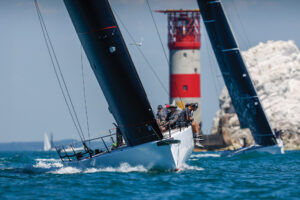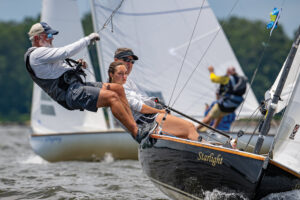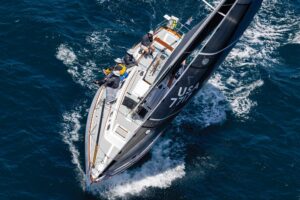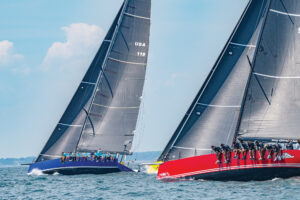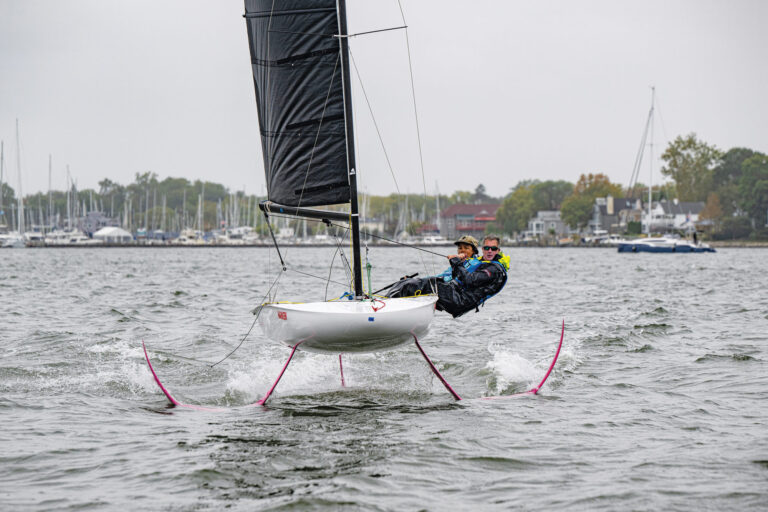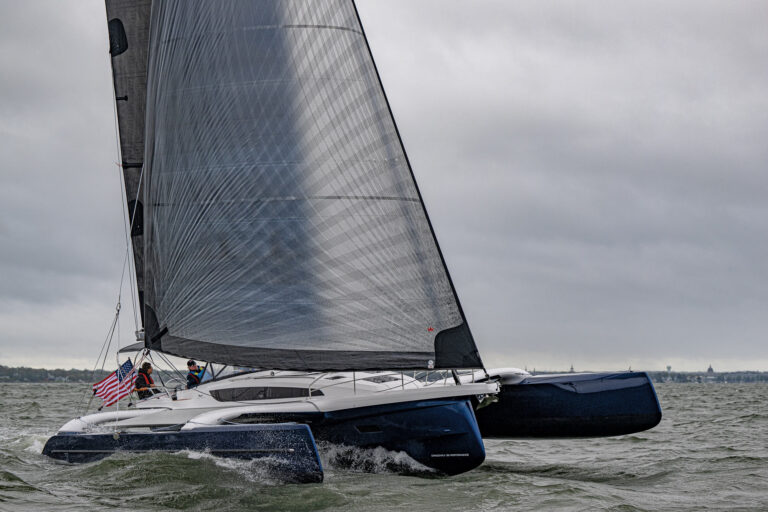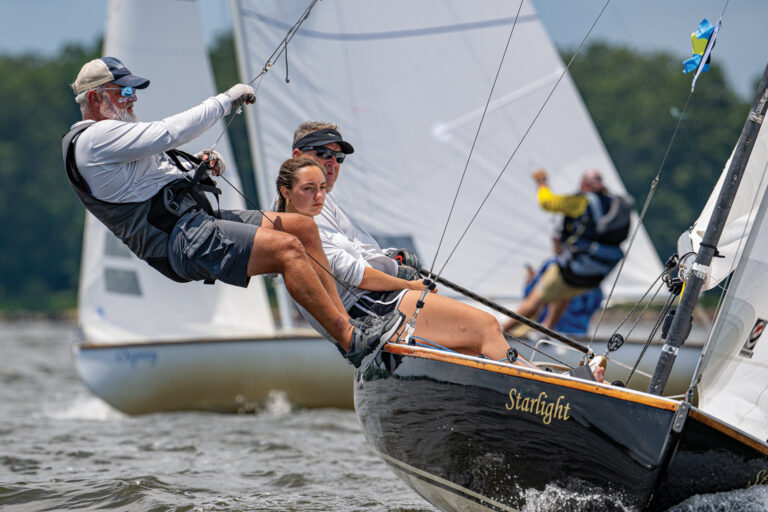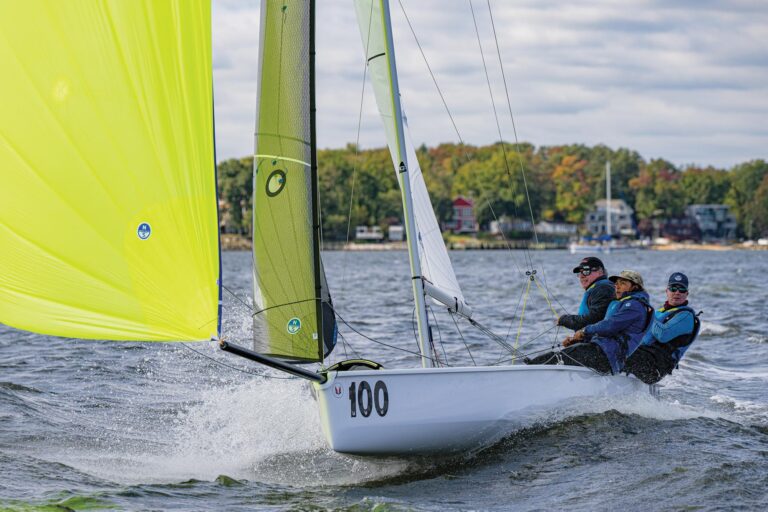
FBLeeStB
In 1977 Bill Lee broke the Transpac course record with his ULDB 70 Merlin and put Santa Cruz designs at the forefront of the “Sled” sailing movement. The father of “Fast is Fun,” Lee designed ultra light racers like the Santa Cruz 70 specifically for downwind races like the Transpac. The 65-year-old currently works as a yacht broker in Santa Cruz, and is serving as Entry Chairman for the 2007 Transpac.In the June issue of Sailing World, editor at large Herb McCormick speaks with Lee about the state of Transpac design; in the following online exclusive, Lee shares his opinions about hired guns, explains the difficulties of developing Grand Prix boats under traditional ratings rules, and reveals the best way to rid your crew of pesky grinders.Do you find it ironic that yacht design is rolling ahead and yet the racing hasn’t necessarily gotten better?I think that’s a very, very interesting discussion. I don’t know whether professionalism is good or bad, but when I started sailing you couldn’t hire people to race for you. It was against the rules. The race was for amateurs. Then it kind of creeped in that the owner could buy you a hotel room and a plane ride home. Then you could buy sails, and the sailmakers could supply you with help to make sure the sails worked right. That reached a point in the mid-80s where sails had two prices, one with help and one without help. The sails actually had two prices-whether you wanted them to come with talent or not. So then finally it came down to: if you could buy the best sails in the world, and the smoothest bottom, and the best winches, and the best yacht designer, well then, why couldn’t you buy faster people? It became part of the logical progression. So now it’s legal to buy faster people, and that has greatly separated the gap between pros and amateurs. In these major point-to-point races, as much as the professional boats get all the attention, the numbers are very much the amateur boats. Ninety percent of the fleet is amateur, ten percent is professional. In what ways do the traditional ratings rules work against Grand Prix development? The thing about these rules-it’s a little bit complicated. If you take what I call a general-purpose rating rule, that’s for realistically handicapping the fleet that for races like the Newport Bermuda Race or the Transpac. You want a rule that gives them all a fair shot at the trophies. Even though it’s a race I sometimes look at it like a rally: you want the widest range of boats to come, so you need a handicap system for them. That’s what the old CCA was, what the IOR was in the early days, what the IMS was intended to be. The guts of these rules is that you charge for the go-fast factors and you credit the go-slow factors. If you don’t credit the go-slow factors you can’t be inclusive of earlier designs that have more go-slow factors than go-fast factors. When you take one of these general-purpose rules and try to use it as a Grand Prix development rule, what happens is the designers take advantage of the go-slow factors and sometimes you get a boat that isn’t very fast. You get a lot of dumb decisions based on protecting the bulk of the fleet. For instance, in the later years of the IOR you had carbon fiber hulls and aluminum masts. Well, that’s ultimately stupid. You ought to have carbon fiber masts and aluminum or fiberglass hulls. The other thing that happens when you use one of these general-purpose rules as a development rule is you don’t get really fast boats. When a new, state-of-the-art IMS 40-footer is a slower boat than a Farr 41 design, you say, wait a minute, why did I spend all this money on a slow boat? I could’ve bought a Farr 41 for a third of the money and not have a slow boat. So I think it’s really, really a mistake to use these general-purpose rules for high-end development rules. How does the general-purpose rule compare to the box rule?With the box rule, what that says is, we’re going to give you a measured amount of each go-fast factor. And we’re not going to give you any credit for the go-slow factors. You get so much sail area, so much beam, so much length, so much of this and so much of that. The only result can be a fast boat. With the box rule, designs tend to be fairly similar. How can the rules encourage a wider variety of designs?What I call the trading rule is when you can trade length for sail area, or displacement for sail area. The old 12-Meter Rule is that way, the America’s Cup rule is that way, except they boxed it in a lot more. What happens with these trading rules is that you can build boats that are quite different, and now with what everybody knows about weather you can build a light-weather boat or a heavy-weather boat, and then when they all come together they’re designed for different weathers.With a box rule, you have some latitude to design a light-weather boat or a heavy-weather boat, but not with the extremes that you have with a trading rule. In a box rule boat you can with a narrower beam waterline and lower wetted surface-a little more toward a light-air boat-or you can go with a wider beam waterline and more wetted surface and a little more stability and you’ve got a heavier-weather boat. So the trading rule allows the boats to vary more in light weather and heavy weather. Whereas the benefit of the boxed rule is the boats are just more similar. When they come together it’s a better race.Have you seen the use of power winches affect the overall designs of racing boats? When I started sailing people had heard of them, but more and more you’re seeing boats that a) have power winches and b) were designed to be power winch boats. So you say, gee, I have a 70 or 80 footer here and we’re going to design it from the ground up as a high-performance, raceable cruising boat and we don’t care what the rules say, we’re going to motorize the winches and we’re going to design a cockpit for these motorized winches, with no space for pedestals in the cockpit. We’d rather have the space below. And while we’re at it, we’re not going to take the guys who grind the pedestals so we can have more of a yachty layout down below. More staterooms, less pipe berths. So you get these boats that develop outside the rating rule while you’re trying to put on a race and you need to figure out how to include them. There’s a lot of them and they were built in good faith as performance cruising boats. The Wally boat guys have done just a super job of saying, hey, there’s more to sailing than just cranking winches. They’ve done just a splendid job of building performance-cruising boats where you don’t need big crews. If you ask most owners what their biggest problem is, it’s getting good crew. If you go to power winches you can rid of a third of your crew, and probably the least desirable!From a brokerage point of view, where’s the market going?In smaller boats I don’t see a lot of development. You take a boat like a Mumm 30 or Melges 32, they’re really good boats. I think in smaller boats, the days of quarter tonners or half tonners, you’re not going to see that. Maybe it’s because the one-designs have gotten better. You don’t need to reinvent the wheel to get a good boat. I think we’re going to keep seeing really good stuff come down in the Open boats. It has to do with shorthanded sailing, handling, sail longevity-all sorts of things that are really valuable to cruisers. I think cruisers have gotten a lot more out of the open classes than they ever got out of IOR as far as useable, trickle-down stuff.

